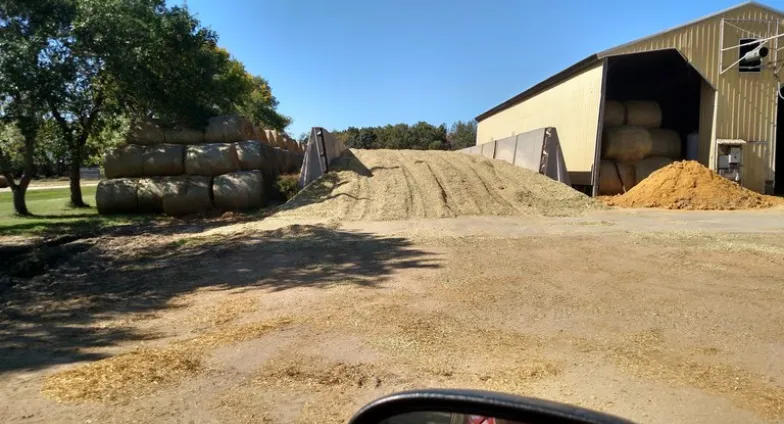Searching for Feeds During Drought
Cattle producers are being challenged to find feed for their cow herd. Drought has placed a terrible constraint on feed resources, causing extra hay, normally saved for next season, to be currently fed or already consumed.
It’s a double hit. Reduced pasture growth means feeding more harvested feed before pasture turn out AND fields that are normally hayed are not growing. Consequently, next year’s winter feed supply is looking sparse.
Unless a total drought occurs, there will be some feed produced this summer. It may have been intended as forage, or perhaps a failed field crop. Instead of harvesting for grain, fields can be hayed or made into silage. Drought raised feeds should have their nutritional profile tested before feeding, looking for both nutrient and toxin levels.
Cereal grains such as wheat, barley or oats, can be hayed and make excellent feeds for a cow herd. With normal rainfall, 3 to 6 large round bales per acre could be harvested. During drought, though, only 1 or 2 bales per acre may be realized.
Be sure to test for nitrates. If toxic levels are found, feed can be diluted with low nitrate feeds when fed. Making silage from these feeds will reduce the nitrate concentration by 50% as the microbes digest nitrates during the fermentation process.
Corn silage is an excellent winter cow feed. In June, the corn is still actively growing and we don’t know what the yield will be. From a cow herd perspective, we might have to buy more corn acres to chop, probably not a cheap source of feed with higher corn prices forecasted. However, it is a source of feed. Corn silage doesn’t lend itself to hauling distances, though, with a 65% water content.
Drought may be widespread in North Dakota but not across the USA. Feeds can be shipped into North Dakota. Please monitor carefully for noxious weeds that could be in feeds. Shipping screenings from another state in to North Dakota could contribute to palmer amaranth or other weed invasion.
North Dakota processing plants produce co-products like wheat midds, distiller grains, soy hulls, corn gluten feed, barley hulls, pea splits, screenings and many protein sources. A list of co products produced in North Dakota is available at https://www.ag.ndsu.edu/livestockextension/sources-and-prices-for-selected-co-products-produced-in-north-dakota.
North Dakota feed manufacturers provide an abundant source of supplements and complete feeds. When in a drought and feed prices are high, feed manufacturers can still produce a reasonably priced feed. These feeds make a balanced ration with added protein, energy, vitamins, minerals and additives. Manufactured feeds can be at a lower cost than the combined cost of buying each ingredient separately.
If you need to discuss options, please contact me or your local NDSU Extension Ag and Natural Resources Agent; we’re here to help.
Karl Hoppe, Ph. D.
Karl.Hoppe@ndsu.edu
Extension Livestock Specialist

